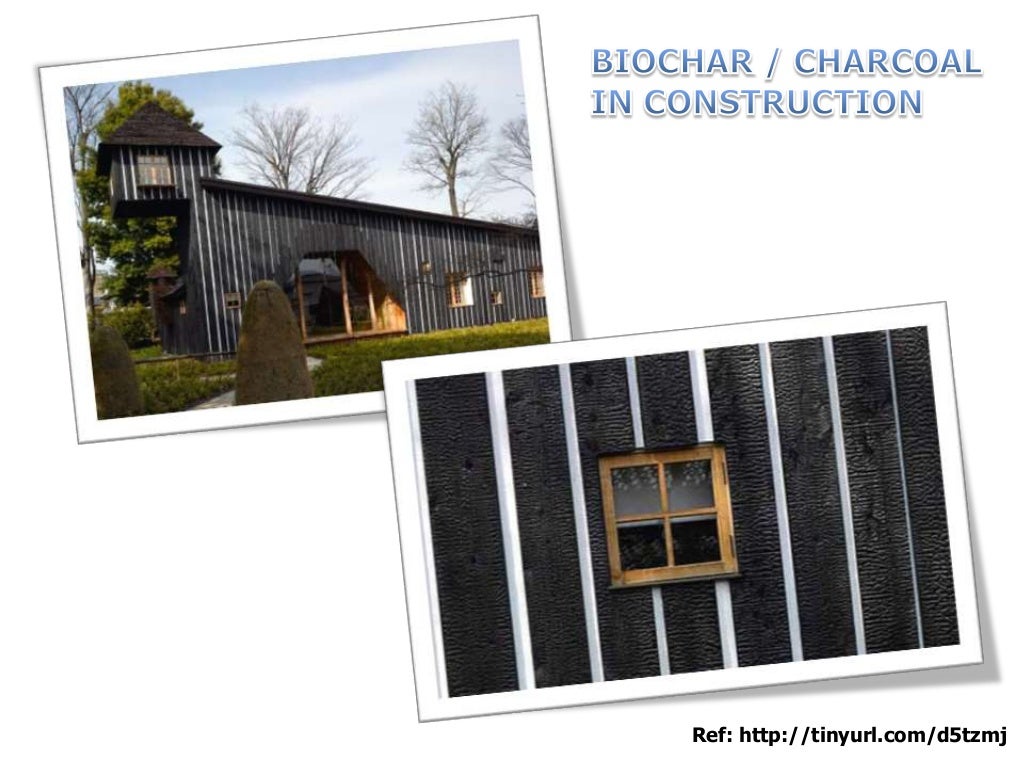Biochar is added to a clay-sand mixture at a ratio of 30 – 50% (compared with normal clay plasters, the sand content is slightly lower). The biochar-mud mixture thus contains 50% biochar, 30% sand and 20% clay. When using cement and lime, sand can be completely replaced by biochar (80%) reducing the weight of the material by factor 5 (see picture with the swimming bricks).
The optimal properties of clay brick were found at 15% content of lime
You can add a pozzolan to hydrated lime and it will take a dead, non reactive lime and make it reactive.
This reaction produces stable calcium silicate hydrates and calcium aluminate hydrates as the calcium from the lime reacts with the aluminates and silicates solubilized from the clay.
Unlike lime or mud, modern cement doesn't breathe, which is why if you're restoring an old building, it's a disaster. Your house becomes prone to mold and damp, and a concrete mortar slowly and steadily eats away at the ancient stonework, killing the house from within.
Calcium silicate hydrate. Calcium silicate hydrate (or C-S-H) is the main product of the hydration of Portland cement and is primarily responsible for the strength in cement based materials.
And plus my load of horse manure that is drying:
Straw is only needed to keep the bricks from cracking if there is more than 30% clay.
Yes, I said horse manure! Building with adobe is one of the oldest building techniques in the world, and some of the world’s oldest standing buildings were constructed with adobe.
- Burnt clays
- Ash from some burnt plant materials
- Silicious earths (such as diatomite)
Vitruvius specified 1 part lime to 3 parts pozzolan (by volume) for general building and you can experiment with the amount of sand you add for strength (I like 2 parts sharp sand).
Biochar's filler effect is more dominant than its pozzolanic ef-
fect, showing the capability to produce compact structures with a littlecontribution towards chemical enhancement
Roman Lime-Clay-crete.
So say 60% biochar with 30% clay and 5% lime and 2.5% horemanure and 2.5% pozzolanIn mortars containing lime, carbon dioxide dissolves in water and reacts with lime to produce insoluble calcium carbonate crystals. These crystals form in spaces such as cracks and grow, thereby sealing the cracks. This self-sealing characteristic reduces water penetration and increases durability. Especially in areas where masonry work is prone to frost damage. The rate of carbonation is dependent upon several environmental conditions.
Then for the actual wood stove oven:
Old ovens were built using only fire clay with lime and 50:50 fireclay : sand mortar is the best option
Let’s start building SINK CITIES – with buildings made of wood, biochar, mud and lime, hemp, straw and wool.
Positive effects of biochar plaster
• Humidity regulation• Insulation
• Noise protection
• Binding of toxins (volatile organic compounds)
• Protection against electromagnetic radiation
• Less electrostatic charging
• Conservation of wood
• Less dust (mites!)
• Deodorant
• Aesthetic
• Anti-bacterial, fungicide
• Air-cleaning
don't use biochar without clay or other binding agent as dusty biochar
could with air humidity start to oxidize and inflame the roof. We do not
have measures yet how the insulation capacity decreases with increasing
humidity. It will decrease but how much we do not know yet.
And is wonderful for internal walls but not so much for insulating external walls.
It can be added to the outside of a house as a "facade" that stores carbon vs letting it enter the atmosphere to become a greenhouse gas.Cob made with char as a sand replacement is very different. The char is very porous and thus has air pockets within it. These char particles will take on water when the wall is created (wet), as the clay dries, however, I think that the water will be drawn naturally from it. Char is not dense, or massive. Char based cob, in my thinking, would perform much to the opposite of sand based cob. A block of regular cob will sink in water. Even when combined with concrete and lime, the blocks containing char float. This would require a high ratio of char in the mix, as can be noted in this quote from the article:
But we aren't doing 100% "biohar' walls we are doing 50% cob+50%biochar walls and with the 50% cob (or 20% portland cement) it's R-value is cut by more than 80%
produced biochar/charcoal has no odor. Properly produced biochar reaches a temperature of almost 1000F. At those temperatures there is nothing volatile left to produce smells. But partially charred wood still has lots of volatiles in it that were produced during the burn. Due to it's absorptive high internal surface area biochar will actually absorb odors, not emit them.
In exploring other commercial applications for biochar, the team at NUS discovered that adding a small amount of it to cement or mortar mixtures made the resulting materials up to 20 percent stronger and 50 percent more watertight.




No comments:
Post a Comment